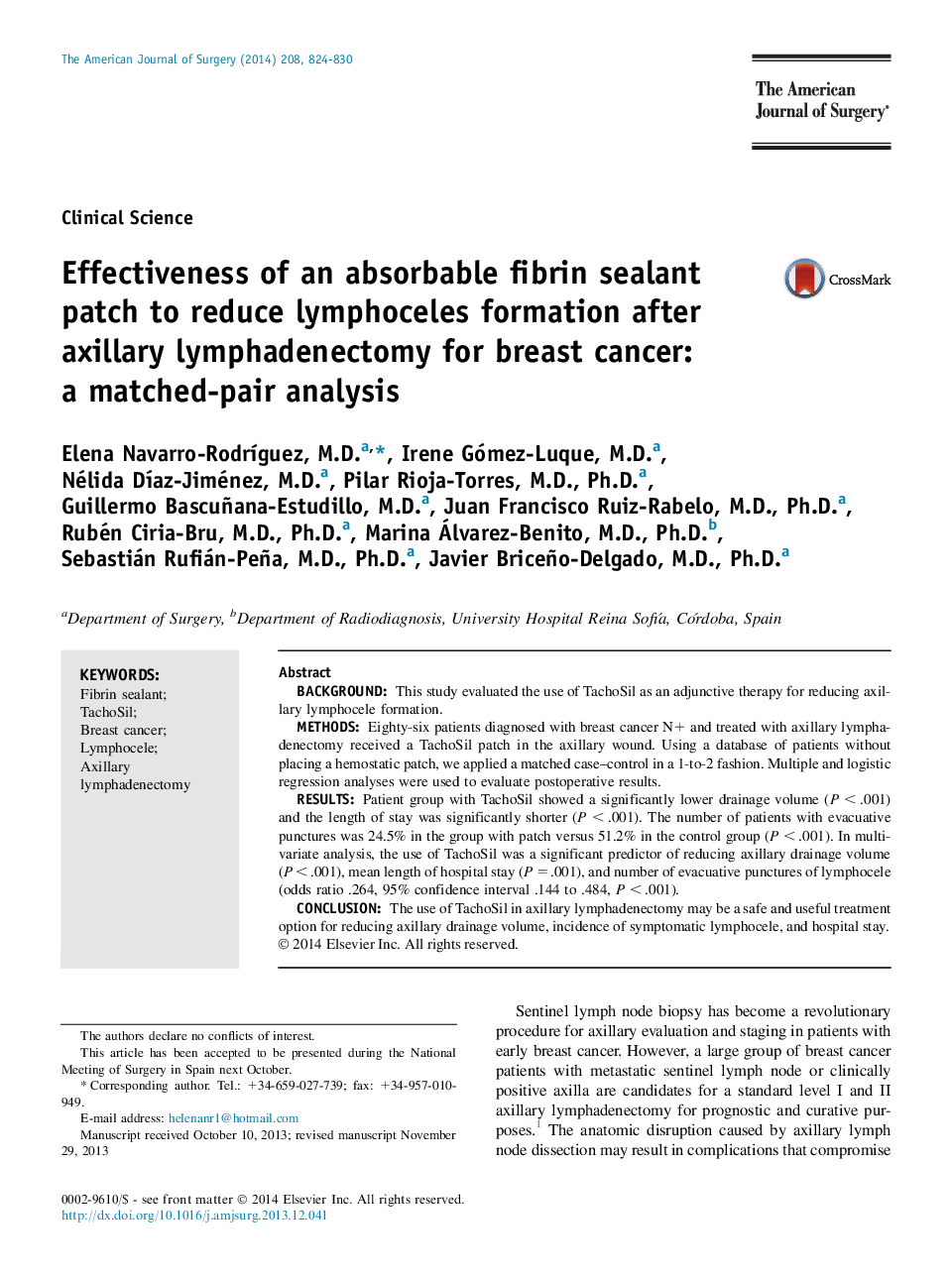| Article ID | Journal | Published Year | Pages | File Type |
|---|---|---|---|---|
| 4278741 | The American Journal of Surgery | 2014 | 7 Pages |
BackgroundThis study evaluated the use of TachoSil as an adjunctive therapy for reducing axillary lymphocele formation.MethodsEighty-six patients diagnosed with breast cancer N+ and treated with axillary lymphadenectomy received a TachoSil patch in the axillary wound. Using a database of patients without placing a hemostatic patch, we applied a matched case–control in a 1-to-2 fashion. Multiple and logistic regression analyses were used to evaluate postoperative results.ResultsPatient group with TachoSil showed a significantly lower drainage volume (P < .001) and the length of stay was significantly shorter (P < .001). The number of patients with evacuative punctures was 24.5% in the group with patch versus 51.2% in the control group (P < .001). In multivariate analysis, the use of TachoSil was a significant predictor of reducing axillary drainage volume (P < .001), mean length of hospital stay (P = .001), and number of evacuative punctures of lymphocele (odds ratio .264, 95% confidence interval .144 to .484, P < .001).ConclusionThe use of TachoSil in axillary lymphadenectomy may be a safe and useful treatment option for reducing axillary drainage volume, incidence of symptomatic lymphocele, and hospital stay.
